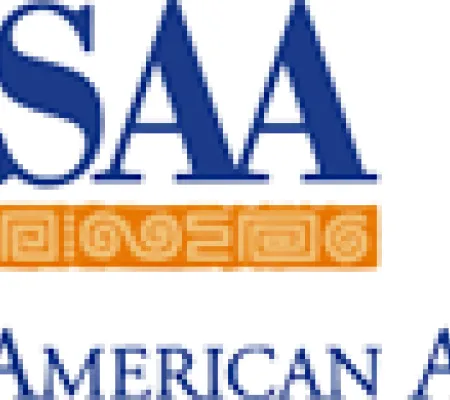The Society for American Archaeology’s Annual Meeting brings together the archaeological community to share ideas, best practices, and state of the art knowledge. The conference’s 84th iteration will be held in Albuquerque, New Mexico and features over 450 sessions, events and workshops. UT Austin graduate Art History students and faculty will be presenting their research within the following sessions:
Art History Professor David Stuart presenting "Proper Names and the Development of Early Writing Systems" in the symposium session Decipherment, Digs, and Discourse: Honoring Stephen Houston’s Contributions to Maya Archaeology.
Master’s candidate Katherine McCarthy presenting "An Empire of Water and Stone: Aztec Kingship and Sacred Landscapes" in the general session for Recent Research in Highland Central Mexico.
Master's candidate Catherine Nuckols-Wilde presenting "Emerging Perspectives: A New Cross-Contextual Analysis of the Niche Monument Corpus" in the general session New Frontiers in Mesoamerican and Central American Archaeolgy.
Master’s candidate Darren Longman and John Pohl presenting "Feathered Serpents of the Oaxacan Isthmus and Pacific Coast, Mexico: Hybridity, Ritualized Environments, and Territorial-Narratives."
Feathered Serpent iconography among Mixtec, Zapotec, Chontal, and Huave ethnic groups of Oaxaca, Mexico indicates that its sociopolitical and religious roles are concomitant with an investment in mythological landscapes and spiritually active ritual environments. Our approach to hybrid serpents draws from multifaceted investigations into images, textiles, manuscripts, rituals, and festivals to determine their impact on territorial-narratives and, more specifically, the social dynamics within and between these ecologically and culturally diverse regions. Further, this paper highlights the cultural variability of Oaxaca’s Feathered Serpents both past and present to reshape our perception of composite creatures within terrestrial, celestial, and supernatural realms.
Assistant Director of The Mesoamerica Center and Assistant Professor of Instruction Astrid Runggaldier, alongside Amanda Aland, R. Alan Covey and Robert Selden, presenting "Revising Empire: Chimú and Inka Ceramic Morphology at Santa Rita B (Chao Valley, Peru)" in the symposium session From Households to Empires: Papers Presented in Honor of Bradley J. Parker.
Populations in the Chao Valley of coastal Peru experienced successive waves of imperial expansion from about AD 1350 to the mid-sixteenth century. In relatively short order, the Chimú, Inka, and Spanish empires each established varying degrees of control over the valley. The site of Santa Rita B offers perspectives of how the annexation of the valley by the Chimú state established an imperial foundation that was strategically revised during the decades of Inka imperial rule. In this paper we discuss the evidence from Santa Rita B, which suggests that the Chimú conquest of the Chao Valley brought about a profound transformation of local identities and daily life as imperial subjects. We also investigate the distribution of the “Chimú-Inka” aesthetic in excavated administrative, ceremonial, and mortuary contexts at Santa Rita B. Given the uneven distribution of Inka-affiliated material culture at the site, we discuss the hybrid nature of Chimú-Inka pottery using preliminary results of a 3D scanning project to examine the impact of Inka conquest on local ceramic production practices and the social use of ceramics at Santa Rita B.
Astrid Runggaldier, alongside R. Alan Covey, Robert Selden and Nicole Payntar, presenting "Geometric Morphometric Perspectives on Vessel Shape Hybridity in Inka-Chimú Ceramics" in the symposium Alfareros Deste Inga: Pottery Production, Distribution and Exchange in the Tawantinsuyu.
The Inka conquest of the Chimú Empire on what is today the north coast of Peru brought a region with well- established economic and political practices under the rule of a highland polity that developed under distinct social and ecological conditions. Many aspects of Inka rule in Chimú territory were adapted to the existing imperial order, and this paper discusses the aesthetic articulation of Inka ceramic shapes and decoration in pottery that was produced in existing north coast workshops. Chimú-Inka pottery has long been understood as a hybrid style that combines north coast potting traditions with Inka stylistic features, although the degree of continuity and change has never been formally described. Using data from high-resolution 3D scans of Chimú, Inka, and Chimú-Inka vessels in publicly-held museum collections, we present data from a geometric morphometric analysis to consider how selected vessel categories evolved following the Inka conquest of the north coast. Quantitative evidence of continuity and change in production practices, aesthetic features, and vessel shapes reveal new perspectives on the impact of Inka rule on ceramic production, as well as the social practices in which decorated pottery communicated status and identity.


